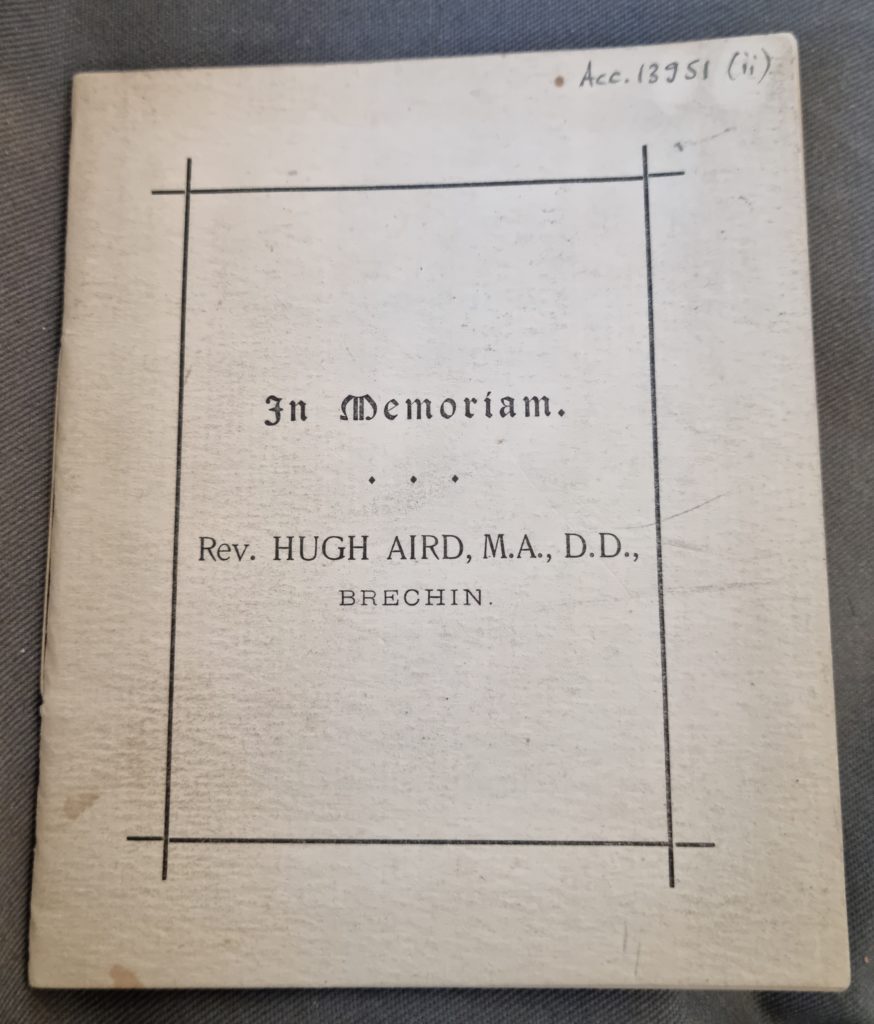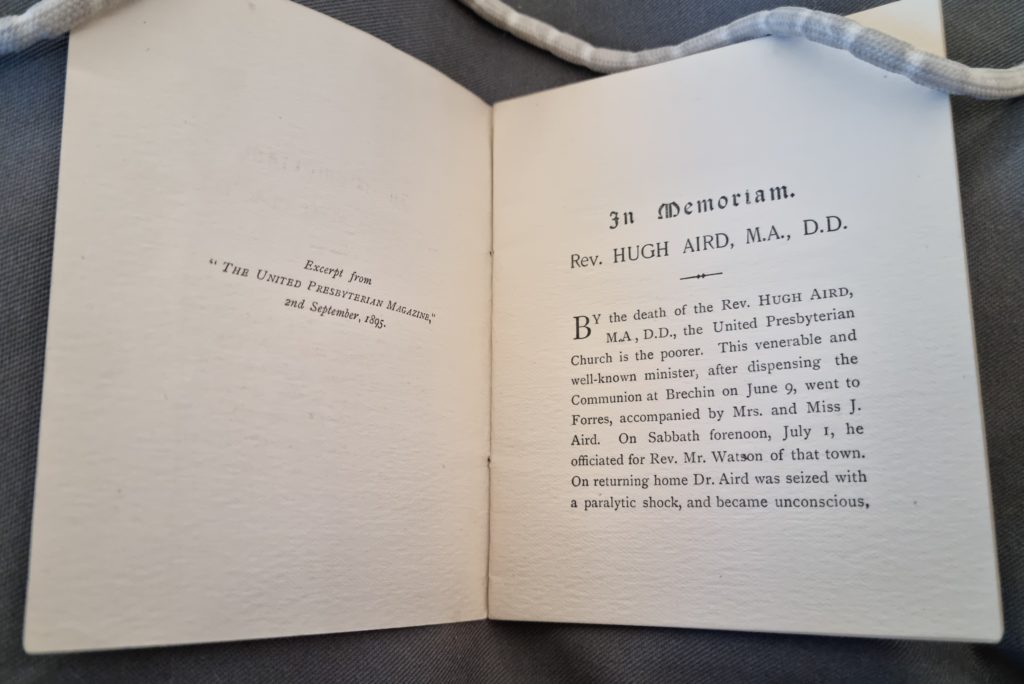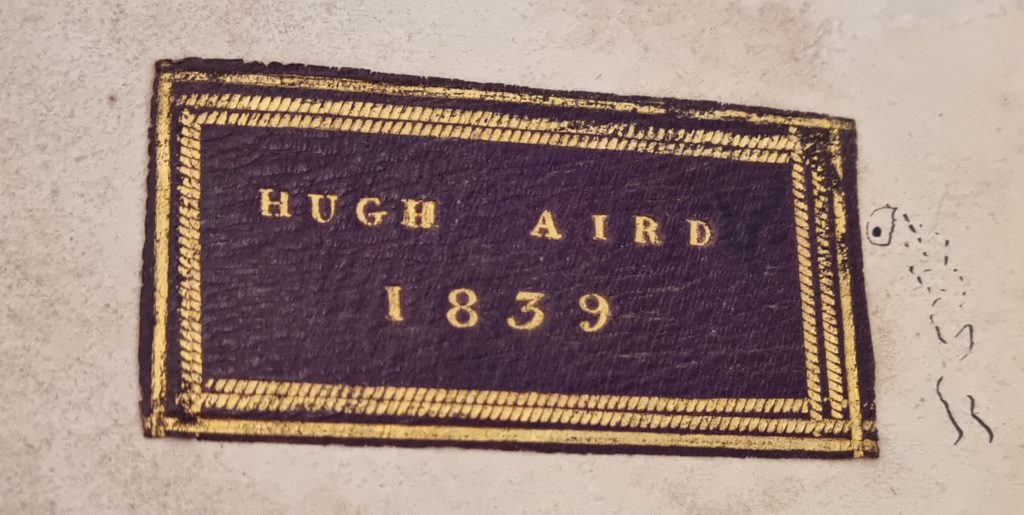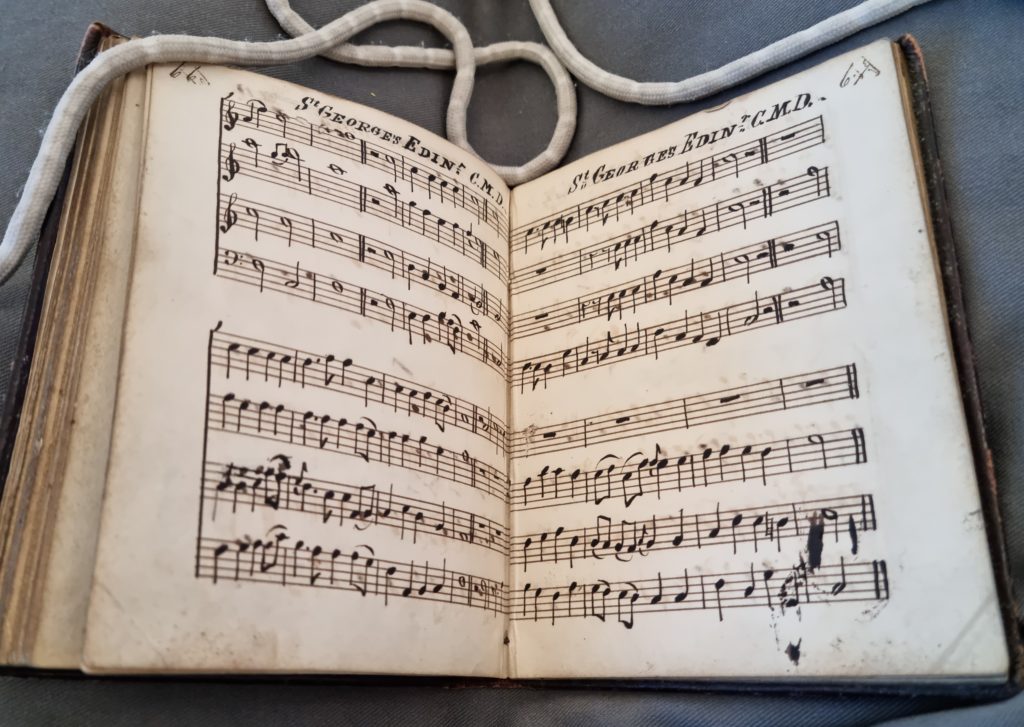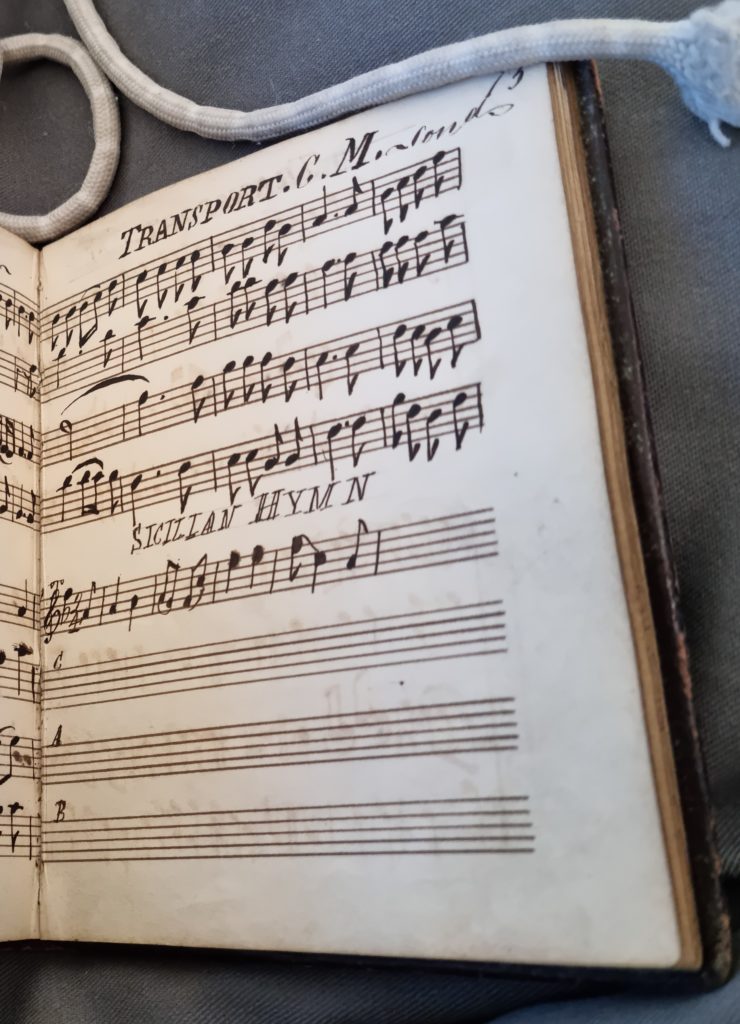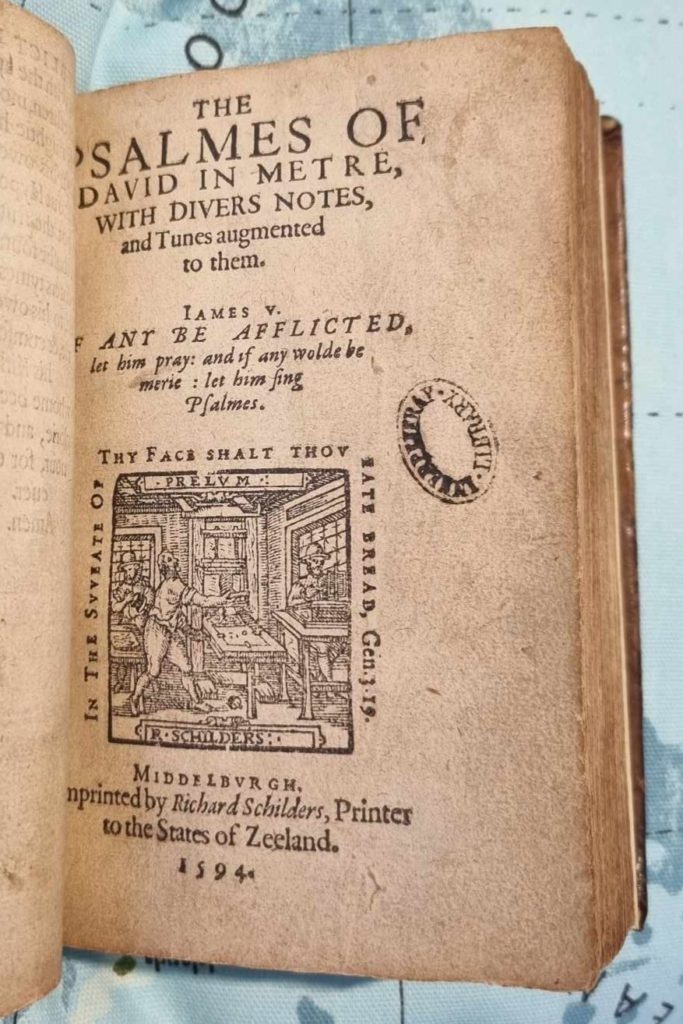The Library of Innerpeffray, a one-stop shop for all your reading and visitor attraction needs! And, potentially… romantic connections?
In last year’s exhibition, we focused on historical visitors to the library and where and when they had travelled from. One of our featured visitors, Alexander Thom junior, visited the library three times, and on his visit of the 23rd July 1879, he was accompanied by nine other individuals, whose signatures were all entered under the initialism of C.B.F.C. These members were: Mary Dee Wells, Caroline McLaren, Margaret H. Pagan, Jane C. Campbell, Miss Gibson, F. D. Ferguson, J. Wemyss Stewart, and Dr. Alexander Thom, from Crieff; Mrs A. D. Macnair, from Allarton, Partick; and Mrs Alexander Scott, from Kirkcowan, Dumfries and Galloway.

A complete mystery for many years of my research, as none of the members elaborated on the meaning of C.B.F.C., it was a very exciting moment when I finally discovered what it signified. While researching Alexander Thom in local newspapers, I came across an article in The Crieff Journal entitled ‘Crieff Botanical Field Club’.[1] Dated just a month after the club’s visit to Innerpeffray, the article lays out their latest “botanising expedition” to Glenturret and Ben Chonzie.

Alexander Porteous, writer of a very informative chronicle of Crieff, tells us that “[i]n the summer of 1879, Dr Alexander Thom, junr., got a number of ladies and gentlemen interested in the pursuit of botany, and under his guidance a Botanical Club was formed. The members made several interesting excursions, chief among them being the ascents of Benchonzie and Ben Vorlich, on the slopes of which many interesting and rare plants were found.”[2]
In addition to Alexander Thom, several other members of the C.B.F.C. were also repeat visitors, who frequented the library on more than one occasion. Caroline, or Carrie, McLaren, for example, visited at least four times between 1872 and 1879, often accompanied by other members of her family.


The particular focus of this blog is to highlight two additional repeat visitors: Fergus David Ferguson and Margaret Helen Pagan. Fergus David Ferguson, born in India in 1858, first visited the library at just three years old, accompanied by his uncle John and aunt Annie. He visited again, aged 11, once more with his uncle, and was able to sign the visitors’ book himself, in what is clearly a child’s handwriting, misspelling his home residence as ‘Culcatta’ rather than Calcutta (since 2001, Kolkata).[3]

Margaret Helen Pagan was born in 1859 in Durisdeer, Dumfries and Galloway, and first visited Innerpeffray, aged 15, in August 1874. In July 1879, the couple visited Innerpeffray together with the C.B.F.C., and two years later, they got married!
Reported in both the Dundee Courier and Stirling Reporter, the two were married by the Reverend John Cunningham (himself a borrower at Innerpeffray) in Crieff on the 27th April 1881. Ferguson’s address was listed at the time as 7 Seton Place, Edinburgh, and Pagan’s as Rockclyffe, Crieff. I have to hope that there were many fellow members of the Crieff Botanical Field Club at the ceremony!

The newspaper article above, from the Linlithgow Gazette, gives more detail about Fergus David Ferguson in 1897 – his work as a bank agent, and an “enthusiastic volunteer” and member of the local corps, Falkirk Parish Church and Falkirk Lawn Tennis Club. By the 1901 census, the couple were living in Falkirk with their two sons, David and Allan, and three daughters, Jean, Christina, and Margaret.
Whether the two met while living in Crieff, or were brought together by Alexander Thom and the Crieff Botanical Field Club, it is wonderful to have evidence of them being in the same place at the same time before they were married. More ways in which the visitors’ books add to our knowledge of social history and people’s lives.
[1] ‘Crieff Botanical Field Club’, Crieff Journal, 22 August 1879, Friday Evening edition, p. 3.
[2] Alexander Porteous, The History of Crieff From the Earliest Times to the Dawn of the Twentieth Century (Oliphant, Anderson and Ferrier, 1912), pp. 378–79.
[3] Innerpeffray Library Visitors’ Book Volume 1, f.18r.



